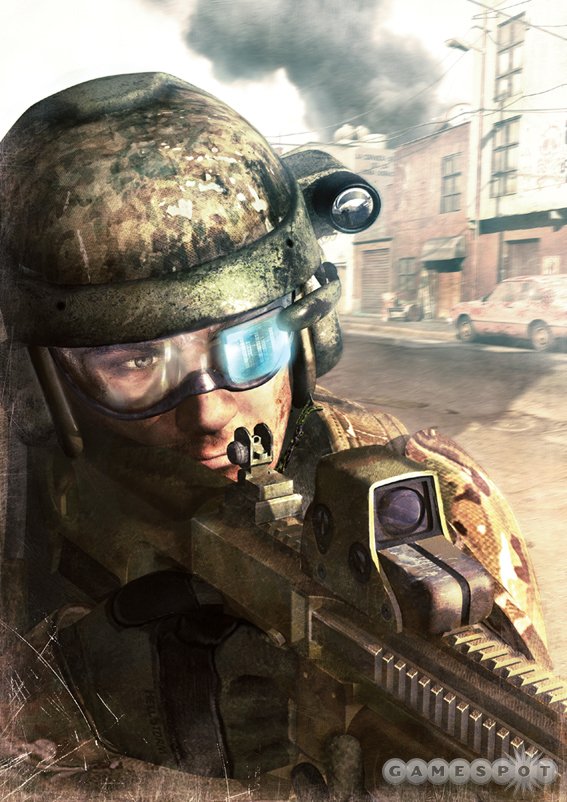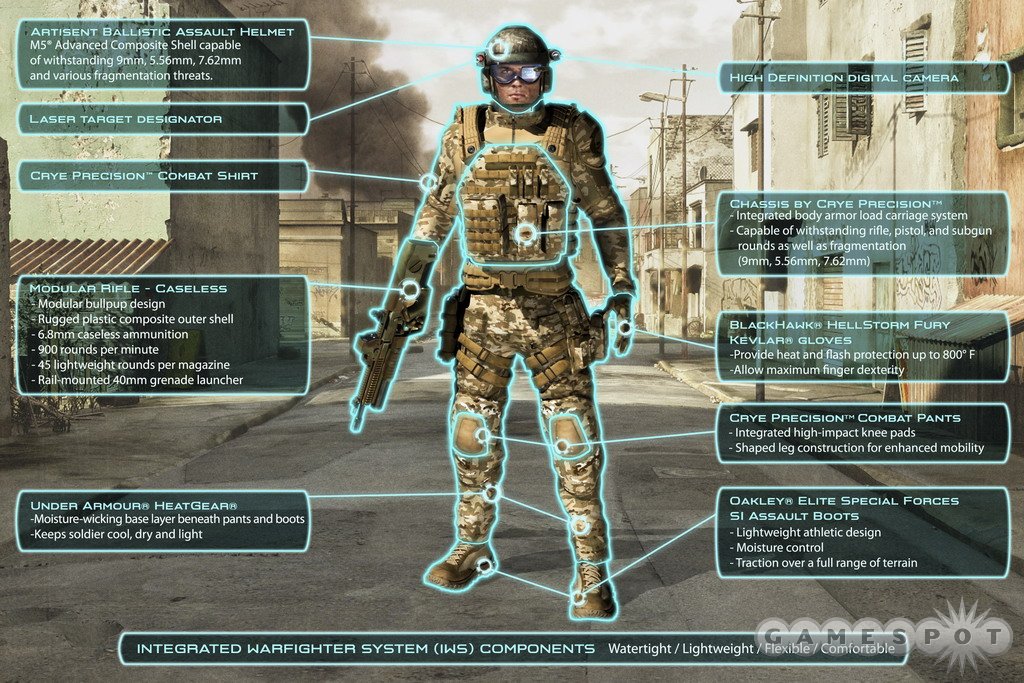Tom Clancy's Ghost Recon Advanced Warfighter Q&A: The Cross-Com
Ubisoft's Adrian Lacey talks about the most important piece of your futuristic arsenal in the upcoming tactical shooter sequel.
Tom Clancy's Ghost Recon Advanced Warfighter is quickly shaping up to be one of the Xbox 360's most anticipated titles, and not just because releases on Microsoft's new megabox have been slow. Advanced Warfighter promises to revitalize the franchise with equal focus on its trademark military tactics and exciting run-and-gun action, and it'll spice things up with a slew of new, high-tech toys for you to deploy against the enemy. The cross-com is the integral piece of equipment that ties your whole arsenal together--but what does it do? Ubisoft senior coordinator Adrian JF Lacey is here with the answer.
GameSpot: First things first: What is the cross-com?

Adrian JF Lacey: The cross-com system is a completely wireless, wearable computer system with a heads-up, hands-free display that overlays information onto the soldier's vision, enabling soldiers to perform in the field faster and more effectively. This feature is based on actual military technology, which is expected to be fielded in the next couple of decades. The cross-com is the blue monocle that is shown on the players, and it shows up as a picture-in-picture window on the player's heads-up-display.
The cross-com works on the principle that a low-intensity laser projects data and images through the pupil onto the retina. The laser moves at high speed and is scanned vertically and horizontally using a coherent beam of light to create a 3D image to the soldier. The image refreshes itself every second, continually updating the information and images to the soldier.
What makes cross-com unique is that it allows a 3D image to be beamed onto one single eye, therefore reducing interference on the user's secondary source of vision. The optical projection combined with a series of automated lens filters allows the integrated warfighter to receive data from other team members, ground and air support, and headquarters without losing the key situational awareness gained by being on the ground.
GS: Why is it being touted as the game's revolutionary feature?
AL: Previous squad-based shooters only allowed you to command your squad. Now, you have so much more to command, and you can see what they see in the real-time window situated on the left of your HUD. In terms of gameplay, you and your friendly units act as nodes on the battlefield, constantly aware of each other's positions and sharing info on current status and enemy positions, and you are able to see everything they see in real time, while still staying focused on the battlefield.
GS: What else do you command besides your squad?

AL: You have a whole series of different support vehicles under your command; for example, tanks, Apaches, Black Hawks, and even unmanned drones that become available at different points in the game. You can cycle through these support forces directly from your cross-com and again see what they are seeing in real time. You can also give orders to all your support forces directly in your 3D tactical map. For example, with an unmanned drone, you will see an overhead view of the battlefield and are fed vital intel on enemy targets. You can order the drone to move about the map, thus giving you additional awareness of the battlefield. Bear in mind that if your drone is taken out by enemy forces, you will lose the tactical advantage.
GS: How will the player be able to fully use it?
AL: It's very simple and intuitive, and it is all done with the D pad. Left/right on the D pad scrolls through the available support forces (Ghost squad, Apaches, tanks, etc.), and up/down drives commands. For example, if you are being attacked by an enemy tank, and you have no antiarmor weapons, you can push to the right on your D pad to select an Apache, point your reticle at the tank, and push up on the D pad, and the Apache will begin to attack the tank. You will see this attack unfold not only from your player's point of view on the ground, but also from the point of view of the Apache in the real-time display.
GS: How has it advanced from past iterations of the franchise?
AL: Past Ghost Recon games gave you control of your squad. We always had high-tech items such as the gun cam, but we really wanted to take things to the next level, and with the power of the next-gen hardware we could give the player a real-time window display and add an interesting vertical gameplay through your Apaches and drones. In multiplayer, it also adds an interesting tactical and vertical gameplay element. For example, the team that uses it, along with good communication and tactical movement, will dominate the team that ignores the drone and teamwork. The drone is not a run-and-gun tool; it benefits the thinking player, sending it out to scout areas, or the team that uses the drone to cover a flank. Because the only enemies that are highlighted with intel icons are the ones detected by the drone, it lets you locate enemies so you can eliminate them. The drone is still susceptible to enemy fire, so tactically it is in your interest to protect it.
Another key thing it allows the player to do is see distances of enemy targets. It tags both sides--enemies are tagged in red lozenges and friendlies are tagged in blue and green--meaning players can spot enemies via the intel provided by the cross-com and drones.
GS: How did you go about implementing it into the game so that it would be functional and not a distraction?

AL: We played with the location, size, and the presentation of the cross-com until we got to the point that it felt intuitive and nonobtrusive. Some of our core fans who saw early screens and footage asked if they could turn off the intels (red lozenges), so we also introduced the ability for the player to switch them on and off at any point throughout the game. But be warned: You will need to be very strong tactically to get through without using some intels.
GS: How does it take advantage of the Xbox 360 hardware?
AL: In the past we always had to choose between certain features, so if we wanted something to be visually stunning we would have to eliminate a certain feature or get rid of something else. Because of our multicore technology, we utilize the three processors of the X360 to the max, and we are able to maintain high visual quality using postrendering FX and high dynamic range, while still being able to add new features, such as the real-time window interface of the cross-com and the 3D tactical map.
GS: Thanks, Adrian.
Got a news tip or want to contact us directly? Email news@gamespot.com
Join the conversation